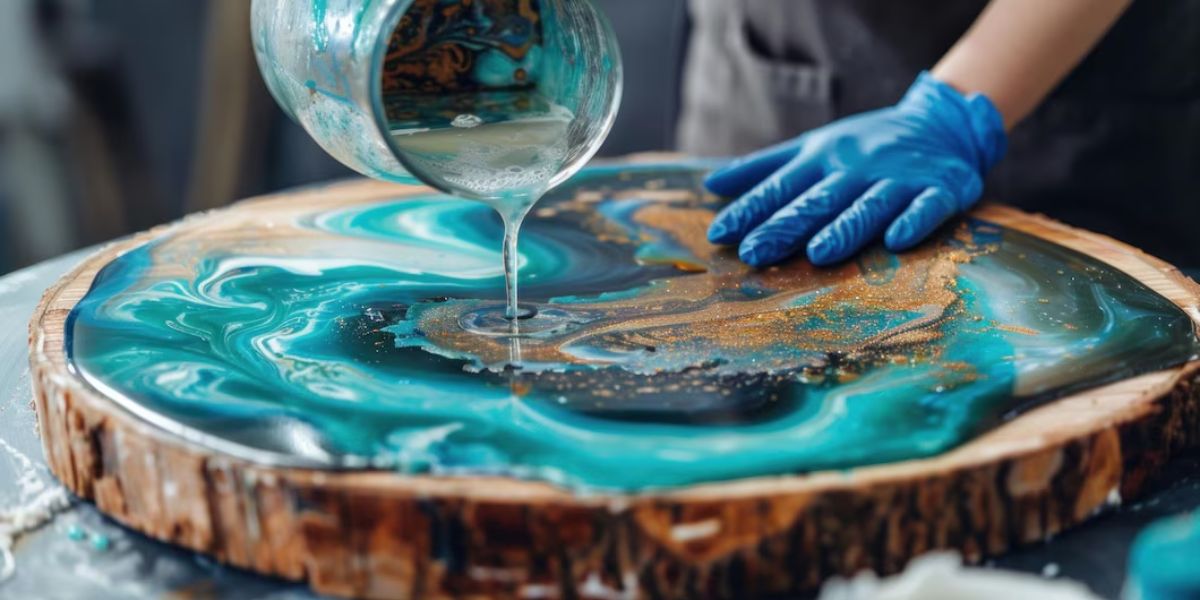Why Your Resin Isn’t Hardening: Common Issues and Solutions

Resin crafting can be a rewarding hobby, but encountering issues with resin not hardening can be frustrating. If you’re using Saashi resin or any other brand, understanding the common issues and their solutions can help ensure your projects turn out perfectly every time. Here’s a guide to help you troubleshoot why your resin might not be hardening and how to fix it.
1. Incorrect Mixing Ratios
One of the most common reasons resin fails to harden is incorrect mixing of the resin and hardener. Saashi resin, like many others, requires precise ratios for proper curing. Always follow the manufacturer’s instructions regarding the ratio of resin to hardener. If the ratio is off, the resin may remain soft or sticky.
Solution: Measure the resin and hardener carefully using a precise scale. Mix thoroughly until the mixture is clear and free of streaks. Ensure you’re working within the recommended time frame for mixing before the resin starts to set.
2. Insufficient Mixing
Even if you use the correct ratio, insufficient mixing can prevent the resin from hardening. Saashi resin requires thorough mixing to ensure that the hardener and resin components combine completely.
Solution: Mix the resin and hardener for at least 3-5 minutes, scraping the sides and bottom of your mixing container to ensure an even blend. Avoid mixing too quickly, as this can introduce air bubbles.
3. Temperature and Humidity
Temperature and humidity play a crucial role in the curing process. Saashi resin, like other resins, needs a stable environment to cure effectively. High humidity or low temperatures can affect the resin’s ability to harden.
Solution: Work in a well-ventilated area with stable temperature and humidity levels. Ideally, the temperature should be between 70-75°F (21-24°C) with low humidity. Consider using a space heater or dehumidifier if needed.
4. Contaminants
Dust, dirt, or other contaminants can interfere with the resin’s curing process. Saashi resin is sensitive to cleanliness, and even minor contaminants can cause issues.
Solution: Work in a clean, dust-free environment. Ensure that all your tools and surfaces are clean before starting your project. Cover your work area to protect it from dust and debris.
5. Expired Resin or Hardener
Using expired or old resin and hardener can lead to curing problems. Saashi resin has a shelf life, and using materials past their expiration date can result in poor results.
Solution: Check the expiration dates on your resin and hardener before use. Store resin products in a cool, dry place and use them within their recommended time frame.
6. Incorrect Cure Time
Different resins have varying cure times. Saashi resin typically has specific curing times that need to be adhered to for optimal results. Rushing the curing process or not allowing enough time can lead to issues.
Solution: Follow the recommended cure time for Saashi resin. Allow your project to cure in a stable environment and avoid touching or moving it until fully cured.
7. Incompatible Additives
Adding certain pigments or fillers to resin can affect its curing process. Ensure that any additives you use with Saashi resin are compatible and used within recommended limits.
Solution: Use only additives that are compatible with Saashi resin and follow the manufacturer’s guidelines for their use. Test small batches first to ensure compatibility.
Conclusion
By addressing these common issues, you can ensure that your Saashi resin projects cure correctly and achieve the desired results. Proper mixing, temperature control, cleanliness, and using fresh materials are key to successful resin crafting. Keep these tips in mind to avoid common pitfalls and enjoy your resin art and creations with confidence.
